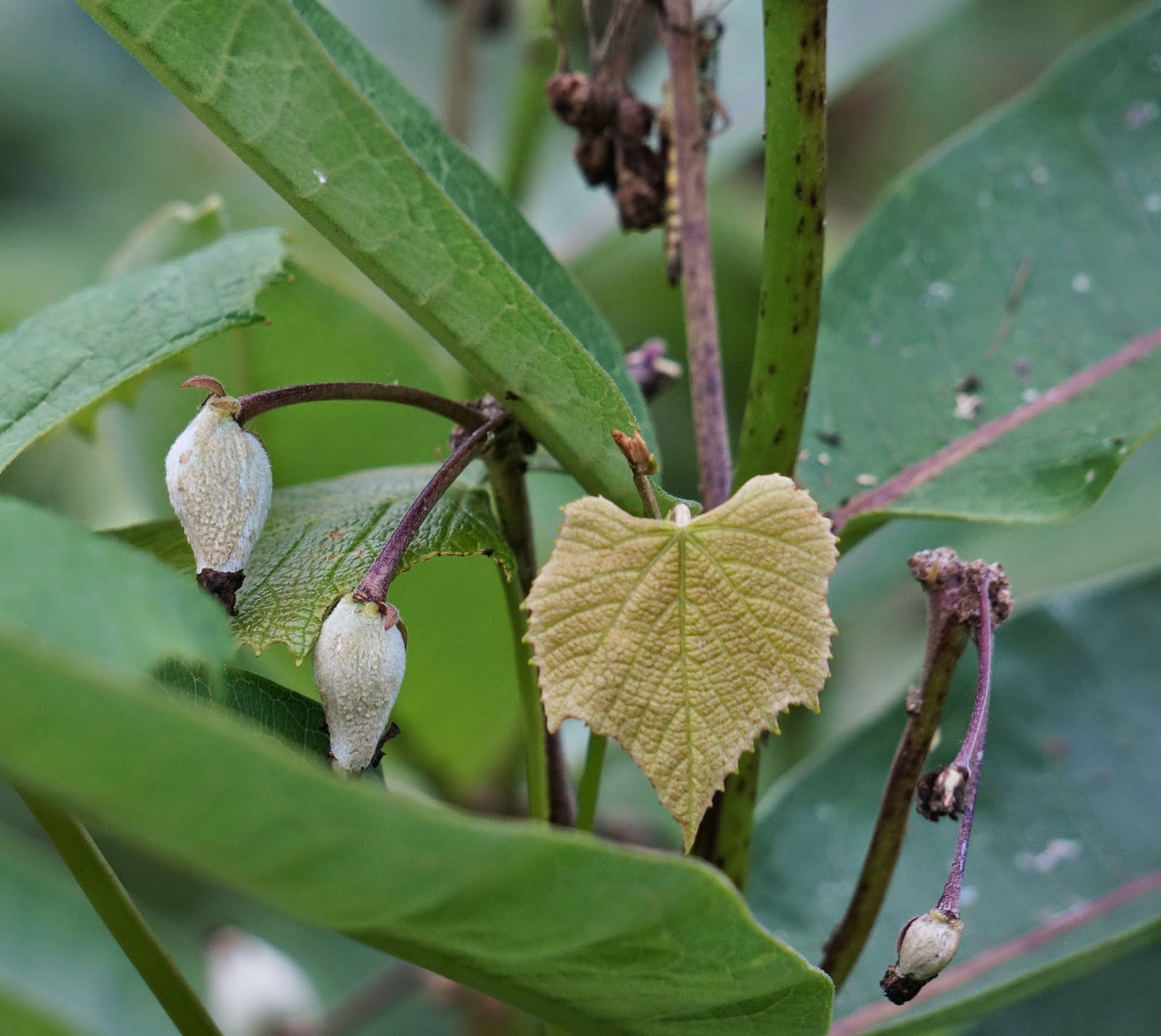Summer's Tipping Point and Peak Water
 |
| Milkweed pods |
 |
| Burdock with flowers |
 |
| Rhubarb leaf |
 |
| Sumac berries |
 |
| Grasshopper |
Given the shortness of our growing season, I intentionally selected varieties that take the fewest days to reach maturity. I planted Rutgers (75 days to maturity) and Amish paste tomatoes. I know that I purchased for Black Prince (75 days), Cosmonaut Volkov (65 days), and Heinz paste (68 days) but I don't think those made it to the garden. My record keeping and plant labeling had a few kinks and I don't know what happened to those varieties.
I also ran into a problem that exacerbates the difficulty of a short growing season: blossom end rot.
 |
| Blossom End Rot on tomatoes. Photo from burke.ces.ncsu.edu |
Immediately after I got the test results, I went down to the garden to check out the baby tomatoes. Sure enough, the bottoms of about half of them were boggy and black. Fuck. I plucked all the rotten ones off and went off to the hardware store for quick lime. I spread the lime below the tomato plants and worked into the top inch or so of the soil, trying my best not to damage their roots. I don't know how quickly the lime will become available and make its way through the green matter of the plant and into newly formed tomatoes. It may not be in time---the lime must circulate, and the tomatoes must flower, form fruit, and ripen, all before the first frost.
It will really suck if, after having planted fifty tomato plants, I end up with only a handful of red ones. I was hoping to make enough sauce and stewed tomatoes to last us throughout the winter.
In addition to my worries about the well-being of our own garden, I have been thinking about food security more generally, specifically in relation to the drought in California and its effects on the agriculture of the Central Valley. The Central Valley provides about half of the country's produce and nuts. Currently, according to the U.S. Drought Monitor, this area is under exceptional drought conditions. The river water typically used to irrigate crops has been reduced by one-third and farmers are relying more heavily on ground water and groundwater reserves. Consequently, deepwater aquifers are being depleted and may take generations to restore (http://www.sfgate.com/news/article/California-drought-As-land-sinks-farmers-5649466.php). According to the San Jose Mercury News, "The rush to drill is driven
not just by historically dry conditions, but by a host of other factors
that promote short-term consumption over long-term survival -- new, more
moisture-demanding crops; improved drilling technologies; and a surge
of corporate investors seeking profits for agricultural ventures"(http://www.mercurynews.com/drought/ci_25447586/california-drought-san-joaquin-valley-sinking-farmers-race). California is one of the few states that does not regulate how much water land-owners can pump.
Given shrinking water reserves and the lowering of the water table, farmers and homeowners have to dig more and deeper wells to access sufficient water. The situation is unlikely to improve, given climate change, which will even "further stress the state's naturally dry environment. Snow melt runoff will decrease. Reservoir levels will fall as heat evaporates more water. Heat-stressed crops and population growth will build even more demand"(http://www.mercurynews.com/drought/ci_25447586/california-drought-san-joaquin-valley-sinking-farmers-race). Depleting groundwater reserves now may leave us in a precarious situation in the coming years when we may need that water even more than we do now to grow the food we've come to depend on. So, yeah, I'm stressing about that.



Comments
Post a Comment